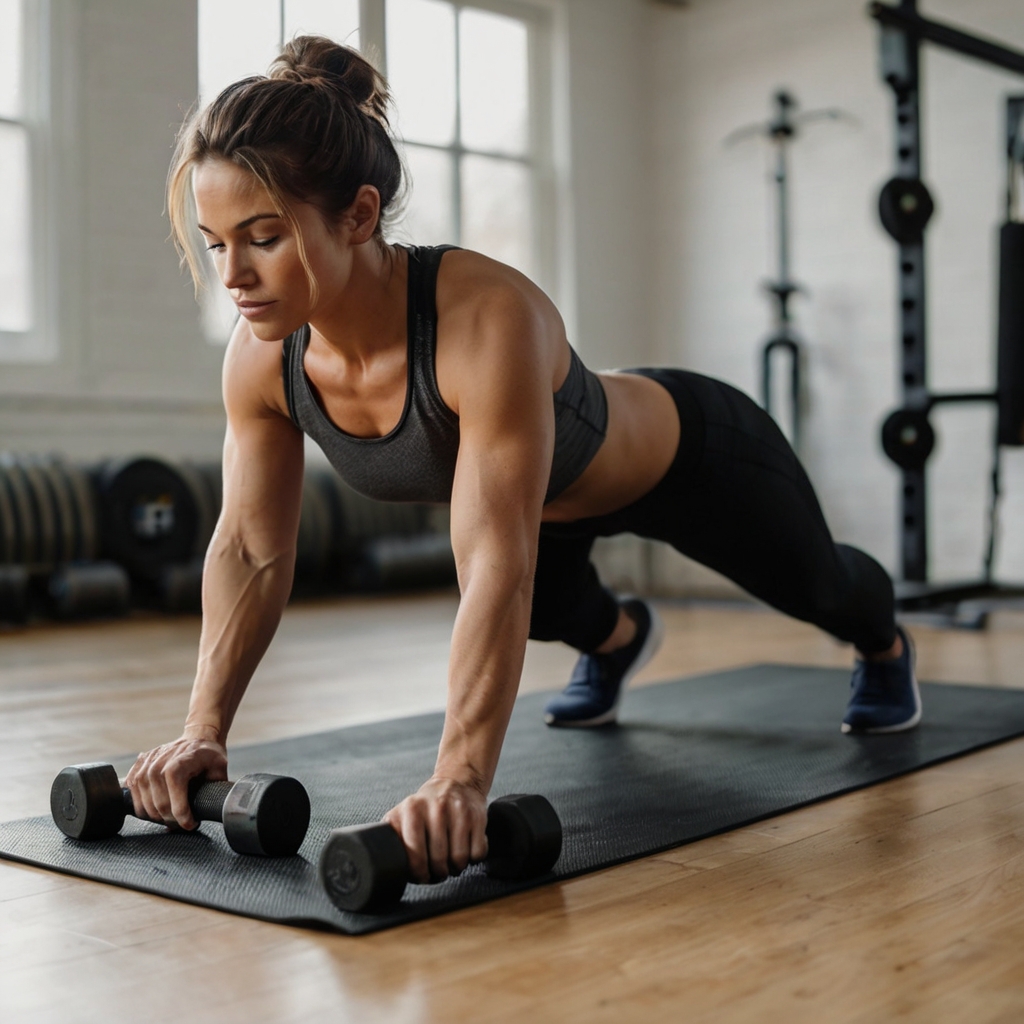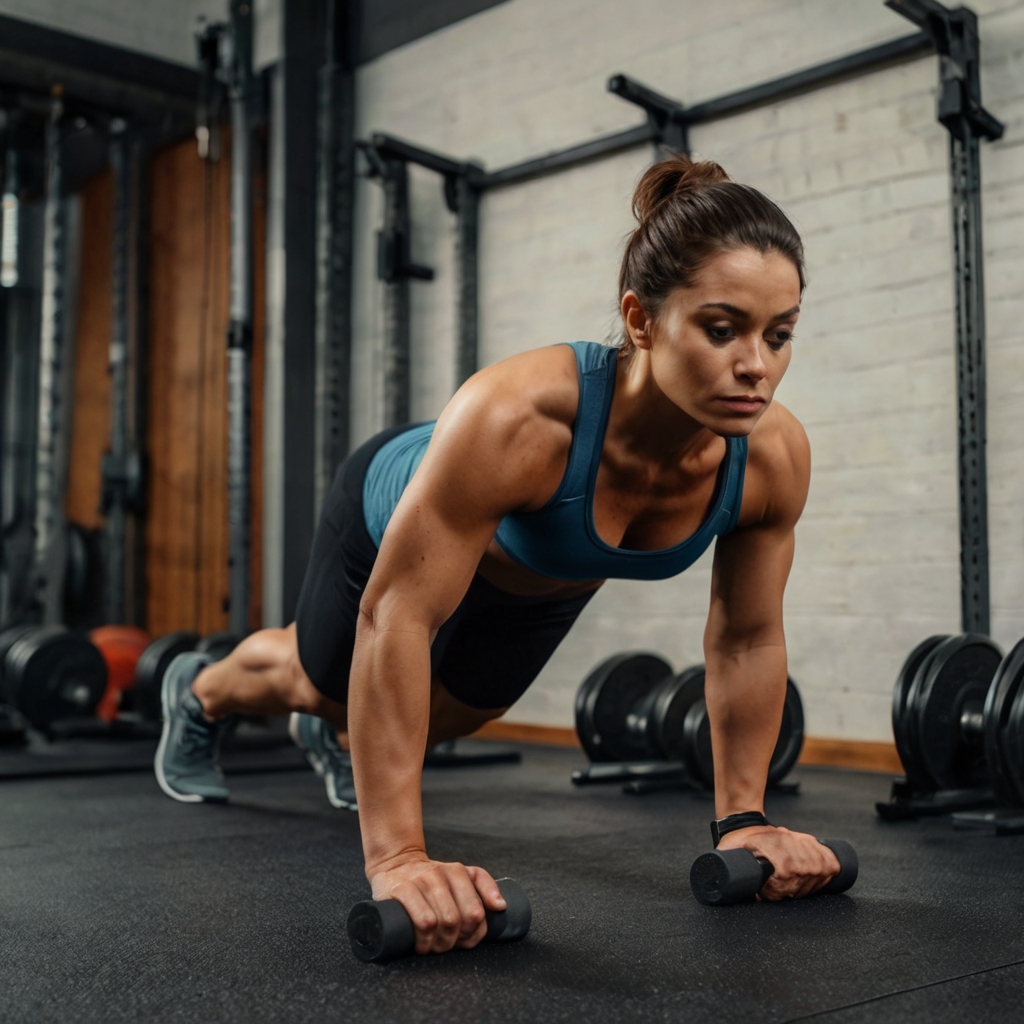You’ve been consistent with your Indoor Bodyweight Exercises, but somehow, it’s just not translating into the results you want.
You’re doing all the right moves – push-ups, squats, lunges – yet you feel like you are stuck in a rut. Your progress has slowed to a crawl or even plateaued altogether.
The truth is, there’s one sneaky mistake hiding behind your lack of results that can be easily corrected.
So what’s going on? And more importantly, how do you fix it and get back to crushing those fitness goals in no time?
Understanding Bodyweight Movement Patterns
Now, diving deeper into bodyweight movement patterns can help clarify why your indoor fitness routine may not be yielding results.
Stiffness and poor coordination play a significant role in preventing you from achieving optimal performance. When performing exercises like push-ups or squats, if your joints are stiff due to lack of mobility or improper alignment, the weight of your body is not being distributed evenly. This can cause unnecessary strain on certain muscle groups, leading to inefficient movement patterns and, ultimately, stagnated progress. :((

Furthermore, a lack of proper coordination between different parts of the body can also hinder results. For instance, when performing exercises that require synchronization between multiple joints or limbs, poor timing and control can result in compensatory movements or reduced range of motion. This not only reduces the effectiveness of your workout but also increases the risk of injury.
Common Mistakes in Bodyweight Exercises (e.g., poor form, lack of engagement)
You’re not getting the results you want from your indoor fitness routine, and it’s likely due to a common mistake in bodyweight exercises.
Poor form is one major reason. You might be thinking that since there are no weights involved, proper form doesn’t matter as much. But the truth is that poor technique can put unnecessary strain on your joints and muscles, leading to injury or even long-term damage.
For instance, when doing push-ups, if you let your hips sag or don’t fully extend your arms at the top of the movement, you’re not engaging the correct muscle groups. This can lead to a less effective workout and put unnecessary stress on your shoulders.
Another common mistake is lack of engagement. You might be going through the motions without really focusing on what each exercise is meant to target.
When doing squats, for example, if you’re not squeezing your glutes at the top of the movement or keeping your core engaged throughout, you’re missing out on key benefits like stronger legs and better balance. It’s all about activating those muscles correctly.
By being more mindful of these common mistakes and making adjustments to correct them, you can start seeing improvements in your indoor fitness routine immediately.
The Importance of Progressive Overload and How to Incorporate It into Your Routine
The secret to unlocking real results from your indoor fitness routine lies in one simple yet often overlooked concept: progressive overload. Without this crucial element, you’re not giving your body what it needs to adapt and improve.
Your workout may seem challenging at first, but if you’re consistently performing the same exercises with the same weights or reps, your body quickly adapts and plateaus. This means that despite your efforts, you’re getting no closer to reaching your fitness goals.
The primary obstacle is a lack of progressive overload in your routine. Without this constant challenge, muscle growth and strength gains come to a standstill.
For instance, if you’ve been doing 10 push-ups three times a week for months but haven’t increased the number or added resistance with weights or bands, your body has likely adapted and is no longer being challenged. This means that despite your consistent effort, you’re not seeing any real progress.
To fix this issue immediately, incorporate progressive overload into your routine by increasing weight, reps, sets, or exercises over time. This could be as simple as adding one more rep to a set each week or switching to a heavier resistance band.
For example, if you’ve been doing 10 push-ups three times a week for months, try increasing the number by two each week and see how your body responds. You can also incorporate different exercises like diamond push-ups or decline push-ups to target specific muscle groups and add variety to your routine.
By incorporating progressive overload into your indoor fitness routine, you’ll be shocked at just how quickly you start seeing real results. Your workouts will become more challenging and engaging, and you’ll begin to notice significant improvements in your overall fitness level. So why wait? Make the switch today and watch your body transform before your eyes!
Mastering Bodyweight Exercises with Proper Form and Technique
When attempting indoor fitness routines using bodyweight exercises, many people struggle with achieving desired results. One major culprit behind this issue is poor form and technique.
To begin mastering bodyweight exercises, it’s essential to focus on proper execution. This includes paying attention to posture, alignment, and movement patterns.
For instance, when performing a push-up, maintain a straight line from head to heels by engaging your core muscles. Avoid letting your hips sag or your back arch. Similarly, during squats and lunges, keep your knees aligned with the direction you’re moving.
Another critical factor is controlling tempo and movement quality. This means avoiding jerky movements and focusing on slow, deliberate transitions between exercises.
For example, when transitioning from a push-up to a squat, pause briefly in a plank position before standing up. Avoid rushing through the movement or using momentum to propel yourself upward.
By prioritizing proper form and technique in your indoor fitness routine, you’ll be able to achieve more effective workouts that #1 Reason E immediately.
Common Obstacles to Progress in Bodyweight Training (injury, lack of variety, mental blocks) and how to overcome them
The truth is, it’s frustrating when you put in the effort but don’t see any progress. And if your indoor fitness routine isn’t delivering results, there could be a common obstacle standing in your way.
Injury is one major roadblock that can quickly halt even the most enthusiastic exercise routine.
Take, for instance, when you push yourself too hard and end up with an overuse injury like tendonitis or shin splints. These injuries not only hinder your progress but also lead to mental blocks, making it tough to get back on track.
The key is to balance intensity with smart training techniques that prevent common blunders.
For instance, incorporating exercises that target multiple muscle groups at once can reduce the risk of injury and help you avoid plateaus. Also, mixing up your routine regularly keeps things exciting and challenges your body in new ways.

By recognizing the potential obstacles to progress in indoor fitness training – like injury or lack of variety – you can take concrete steps to overcome them. With smart strategies like targeting multiple muscle groups at once and mixing up your routine, you’ll be back on track toward achieving your goals in no time.
The Role of Mindset in Achieving Success with Indoor Fitness Routines (beliefs, self-talk, motivation)
When you’re stuck in an indoor fitness routine, it’s often not about the exercises or workouts themselves – but rather your mindset.
A major reason for the lack of progress is negative self-talk. If you constantly tell yourself that you’re not good enough, strong enough, or capable enough, those beliefs will become a reality.
You may find yourself thinking “I’m too out of shape to do this” or “I’ll never be able to lose weight”. These negative thoughts can lead to self-doubt and fear of failure. As a result, you might quit before even giving your routine a fair shot.
Another culprit is a lack of motivation. When you’re not driven by meaningful reasons, it’s easy to fall into the trap of going through the motions without any real purpose or passion.
You may have started an indoor fitness routine with high hopes and enthusiasm, but as time goes on, those initial motivations can wear off. Without a clear “why” behind your workouts, you’ll struggle to stay committed and see results.
By acknowledging the role of mindset in achieving success with indoor fitness routines – and actively working to rewire negative self-talk and spark motivation – you can start seeing real progress and getting the results you deserve immediately.
Strategies for Incorporating Variety into Your Bodyweight Workout Routine
When you rely on bodyweight exercises for your indoor fitness routine, consistency is key. However, a lack of variety can quickly lead to plateaus.
The primary issue lies in the repetitive nature of bodyweight exercises. Doing the same workouts over and over can result in stagnant progress.
For instance, if you perform push-ups or squats only every day without mixing up your routine, your muscles will eventually adapt to the exercise and stop responding to it as effectively.
The solution is to incorporate variety into your bodyweight workout routine by changing the exercises you do. This can be done by combining different types of movements, such as rotational exercises or functional training that challenges balance and coordination.
To spice up your routine, try adding new exercises like single-leg squats, pistol push-ups, or burpees with a jump at the end. You can also change your grip on barbell-style exercises like pull-ups by using different grips, such as neutral or pronated grips.
By incorporating variety into your bodyweight workout routine, you’ll challenge yourself in new ways and stimulate muscle growth again. This will keep you motivated and ensure that you continue to see results from your indoor fitness routine.
How to Create a Balanced and Well-Rounded Bodyweight Training Program
Bodyweight blunders often lead to disappointing results from indoor fitness routines. One major reason for this is the lack of balance and roundness in bodyweight training programs.
The main issue lies in focusing too much on specific exercises or muscle groups, neglecting others that are equally important. This can cause imbalances and deficiencies throughout your entire physique.
For example, if you’re only doing push-ups and squats, but not incorporating exercises that target your shoulders or legs from different angles, you might end up with weak links in your overall strength.
To create a well-rounded bodyweight training program, it’s essential to address this imbalance by incorporating exercises that engage multiple muscle groups at once.
Try combining compound movements like squats, lunges, and push-ups with more isolation exercises targeting specific areas. This will help ensure you’re strengthening all parts of your physique evenly.
For instance, instead of just doing traditional push-ups, try adding diamond or decline variations to target the shoulders from different angles. Similarly, incorporating side leg lifts and calf raises into your routine can add variety and overall strength gains.
By adopting a more balanced approach like this, you’ll be able to achieve better results in less time and enjoy a stronger, more toned body.
Check out our blog on how to Transform Your Home into a State-of-the-art Indoor Fitness Studio with minimal equipment and Maximum Results! Where we cover not only the indoor gym machinery basics, but also PRO tips on what NOT TO DO to get it right – ALWAYS ;)
Overcoming Plateaus and Stagnation in Indoor Fitness Routines with Progressive Overload and New Exercises
The power of your body lies in its ability to adapt and change with consistent effort. When you plateau in an indoor fitness routine, it’s not because you’re lazy or don’t have the willpower – it’s simply because your workout has become too familiar, and your muscles have adjusted accordingly.
When this happens, progress slows down significantly, making it tough to see any results from all that hard work. It’s frustrating when every sweat session feels like a repeat of the last one.
For instance, you start doing push-ups and squats consistently, but as time goes by, your body becomes too efficient at performing these exercises. You stop seeing those gains in strength or endurance because your muscles have learned to do them automatically.
The solution lies in mixing things up with progressive overload and new exercises that challenge you differently.
Try incorporating different grip positions for push-ups, like diamond push-ups or wide-arm variations. You can also switch from traditional squats to sumo squats or pistol squats to engage your muscles in a fresh way. Additionally, consider adding resistance bands or light weights to increase the intensity of your workouts.
By introducing progressive overload and new exercises into your indoor fitness routine, you’ll be able to break through plateaus and see noticeable improvements in strength, endurance, and overall physical performance. Your body will adapt quickly once again as you challenge yourself with fresh movements stimulating growth and progress.
Setting Realistic Goals and Tracking Progress for Increased Motivation
When you’re stuck in a fitness rut, it’s easy to blame everything but yourself. But the truth is, there might be one major obstacle holding you back – unrealistic goals.
Setting ambitious goals can lead to discouragement and burnout when they’re not met. This can cause frustration and make it seem like your indoor fitness routine isn’t working at all.
For instance, setting a goal to lose 10 pounds in two weeks might be overly optimistic. Without making significant changes to your diet or workout routine, you’ll likely fall short of this goal. This can lead to feelings of failure and demotivation.
The solution is simple – set realistic goals aligning with your fitness level and progress.
Break down larger goals into smaller, achievable ones. For example, instead of setting a goal to run 3 miles without stopping in two weeks, aim to run 1 mile three times a week. As you reach these smaller milestones, you’ll build confidence and momentum towards your bigger goal.
By setting realistic goals and tracking progress along the way, you can maintain motivation and see real results from your indoor fitness routine. Don’t be too hard on yourself if progress isn’t immediate – every small step counts. Stay committed to your goals, celebrate your successes, and watch as you start to achieve the bodyweight results you’ve always wanted.
Common Myths About Bodyweight Training Debunked (e.g., lack of intensity, poor results due to body type)
When it comes to your indoor fitness routine, one crucial mistake can lead to a lack of results.
Poor body positioning is often the primary reason for not getting the desired outcomes. It’s common for people new to bodyweight training to focus on the movement itself rather than their posture and alignment.
Think about it like this: if your form is off, you can’t effectively engage your core muscles, which are essential for generating strength. Additionally, incorrect positioning puts unnecessary strain on joints, leading to injury over time.
Another common myth is that body type or natural athletic ability determines one’s potential for progress in bodyweight training.
The truth is that anyone can improve with practice and patience. It’s not about being naturally gifted; it’s about mastering the fundamental movements, engaging your core correctly, and consistently challenging yourself to adapt.
Conclusion and Final Tips for Achieving Success with Indoor Fitness Routines Using Bodyweight Exercises
Success… It is Not About You!
You’ve been doing it wrong, not because you’re incompetent or lazy, but because you haven’t cracked the code. The key is not about perfect form or grueling workouts – it’s about consistency and patience. It’s time to break free from the cycle of plateaus and self-doubt.
When you master your bodyweight routine, you’ll unlock a world of confidence, energy, and mental toughness. You’ll be amazed at how quickly your physique transforms as you build strength, endurance, and flexibility.
So don’t wait any longer! Take control of your indoor fitness journey today. Ditch the excuses and dive headfirst into the world where bodyweight exercises are not just a trend but a powerful tool for transformation. ^Right up there^ ;)




